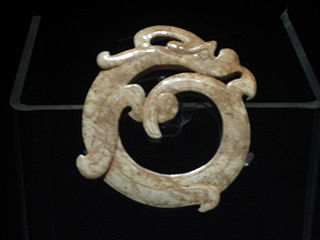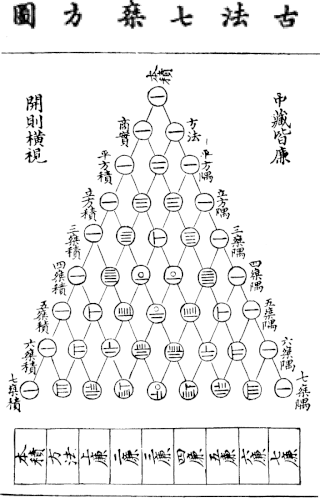
Taoism or Daoism is a diverse tradition indigenous to China, variously characterized as both a philosophy and a religion. Taoism emphasizes living in harmony with the Tao—generally understood as being the impersonal, enigmatic process of transformation ultimately underlying reality. The concept originates in the Chinese word 道, which has numerous related meanings: possible English translations include 'way', 'road', and 'technique'. Taoist thought has informed the development of various practices within the Taoist tradition and beyond, including forms of meditation, astrology, qigong, feng shui, and internal alchemy. A common goal of Taoist practice is self-cultivation resulting in a deeper appreciation of the Tao, and thus a more harmonious existence. There are different formulations of Taoist ethics, but there is generally emphasis on virtues such as effortless action, naturalness or spontaneity, simplicity, and the three treasures of compassion, frugality, and humility. Many Taoist terms lack simple definitions and have been translated in several different ways.

Liubo was an ancient Chinese board game for two players. The rules have largely been lost, but it is believed that each player had six game pieces that were moved around the points of a square game board that had a distinctive, symmetrical pattern. Moves were determined by the throw of six sticks, which performed the same function as dice in other race games.

In Chinese philosophy, taiji is a cosmological state of the universe and its affairs on all levels, involving the interaction of Yin and Yang, the Five Phases and finally, all the concrete things in the universe. More concretely, taiji is a conceptual current throughout religious and philosophical traditions indigenous to China, contemporaneously studied and applied in the profession of acupuncture, and within traditional Chinese medicine throughout and beyond the Sinosphere.

The Yellow Emperor, also known as the Yellow Thearch or by his Chinese name Huangdi, is a mythical Chinese sovereign and culture hero included among the legendary Three Sovereigns and Five Emperors, and an individual deity (shen) or part of the Five Regions Highest Deities in Chinese folk religion. Calculated by Jesuit missionaries, who based their work on various Chinese chronicles, and later accepted by the twentieth-century promoters of a universal calendar starting with the Yellow Emperor, Huangdi's traditional reign dates are 2697–2597 or 2698–2598 BC.

A mandarin square, also known as a rank badge, was a large embroidered badge sewn onto the surcoat of officials in Imperial China, Korea, in Vietnam, and the Ryukyu Kingdom. It was embroidered with detailed, colourful animal or bird insignia indicating the rank of the official wearing it. Despite its name, the mandarin square falls into two categories: round buzi and square buzi. Clothing decorated with buzi is known as bufu in China. In the 21st century, the use of buzi on hanfu was revived following the Hanfu movement.

Panlong is an aquatic dragon resembling a jiaolong 蛟龍 "river dragon; crocodile" in Chinese mythology, an ancient motif in Chinese art, and a proper name.

The bi is a type of circular ancient Chinese jade artifact. The earliest bi were produced in the Neolithic period, particularly by the Liangzhu culture. Later examples date mainly from the Shang, Zhou and Han dynasties. They were also made in glass.

Chinese jade refers to the jade mined or carved in China from the Neolithic onward. It is the primary hardstone of Chinese sculpture. Although deep and bright green jadeite is better known in Europe, for most of China's history, jade has come in a variety of colors and white "mutton-fat" nephrite was the most highly praised and prized. Native sources in Henan and along the Yangtze were exploited since prehistoric times and have largely been exhausted; most Chinese jade today is extracted from the northwestern province of Xinjiang.

Counting rods (筭) are small bars, typically 3–14 cm long, that were used by mathematicians for calculation in ancient East Asia. They are placed either horizontally or vertically to represent any integer or rational number.

Waidan, translated as 'external alchemy' or 'external elixir', is the early branch of Chinese alchemy that focuses upon compounding elixirs of immortality by heating minerals, metals, and other natural substances in a luted crucible. The later branch of esoteric neidan 'inner alchemy', which borrowed doctrines and vocabulary from exoteric waidan, is based on allegorically producing elixirs within the endocrine or hormonal system of the practitioner's body, through Daoist meditation, diet, and physiological practices. The practice of waidan external alchemy originated in the early Han dynasty, grew in popularity until the Tang (618–907), when neidan began and several emperors died from alchemical elixir poisoning, and gradually declined until the Ming dynasty (1368–1644).

The Yellow River Map, Scheme, or Diagram, also known by its Chinese name as the Hetu, is an ancient Chinese diagram that appears in myths concerning the invention of writing by Cangjie and other culture heroes. It is usually paired with the Luoshu Square—named in reference to the Yellow River's Luo tributary—and used with the Luoshu in various contexts involving Chinese geomancy, numerology, philosophy, and early natural science.

Yang Lien-sheng who often wrote under the name L.S. Yang, was a Chinese-American sinologist and professor at Harvard University. He was the first full-time historian of China at Harvard and a prolific scholar specializing in China's economic history.
Chinese theology, which comes in different interpretations according to the Chinese classics and Chinese folk religion, and specifically Confucian, Taoist, and other philosophical formulations, is fundamentally monistic, that is to say it sees the world and the gods of its phenomena as an organic whole, or cosmos, which continuously emerges from a simple principle. This is expressed by the concept that "all things have one and the same principle". This principle is commonly referred to as Tiān 天, a concept generally translated as "Heaven", referring to the northern culmen and starry vault of the skies and its natural laws which regulate earthly phenomena and generate beings as their progenitors. Ancestors are therefore regarded as the equivalent of Heaven within human society, and therefore as the means connecting back to Heaven which is the "utmost ancestral father". Chinese theology may be also called Tiānxué 天學, a term already in use in the 17th and 18th centuries.

The Wǔfāng Shàngdì, or simply Wǔdì or Wǔshén are, in Chinese canonical texts and common Chinese religion, the fivefold manifestation of the supreme God of Heaven. This theology dates back at least to the Shang dynasty. Described as the "five changeable faces of Heaven", they represent Heaven's cosmic activity which shapes worlds as tán 壇, "altars", imitating its order which is visible in the starry vault, the north celestial pole and its spinning constellations. The Five Deities themselves represent these constellations. In accordance with the Three Powers they have a celestial, a terrestrial and a chthonic form. The Han Chinese identify themselves as the descendants of the Red and Yellow Deities.

The Han dynasty coinage system refers to the currency system of the Han dynasty, which ruled China from 202 BC until 9 AD, when it was overthrown by the Xin dynasty, and again from 25 AD until 220 AD. The most common coin used during the Han dynasty period was the bronze cash coin, while smaller quantities of gold coinages also circulated. During the reign of Emperor Wu in 119 BC a series silver-tin alloy coins was introduced, but due to both unforeseen inflationary effects and rampant counterfeiting it was withdrawn after circulating for only 4 years. The Han dynasty period saw an average annual production of 220,000,000 bronze cash coins minted. The Han dynasty saw the introduction of the Wu Zhu (五銖) inscription on cash coins, which would be used for a total 736 years centuries after the end of the Han dynasty, until it was replaced by the Kaiyuan Tongbao (開元通寳) inscription in 621 AD during the Tang dynasty period.

Yunjian, also known as Cloud collar in English and sometimes referred as châr-qâb, is a Chinese term which can either to a four-lobed motif, or to a traditional Chinese garment accessory item in Hanfu, the Traditional clothing of the Han Chinese, which is typically found in the form of a detachable collar with cloud patterns and is worn over the shoulders area, similar to a shawl. As an garment accessory, the yunjian is also typically found in four-lobed design although multi-lobed design also existed throughout history. The yunjian could also be applied directly on garments, where it would fall around the collar of robes onto the chest and shoulder region,or as a clothing appliqué. In China, the yunjian has both ceremonial and practical uses when used in clothing. As a garment item, the yunjian was an important clothing element for Chinese women, especially in the Ming and Qing dynasties; its usage was spread across China where it became associated with the Han Chinese's wedding clothing. In Henan, brides would wear yunjian decorated with hanging ribbons and bells. It also had the practical use of preventing clothing from being dirty and oily by covering up the clothes and by covering up the stains. The yunjian is used in Peranakan wedding; the multi-layered yunjian worn by Chinese brides on the day of their wedding is sometimes known as "phoenix collar". The yunjian also started to be worn by the Non-Chinese, the Tartars of northern China and Manchuria in the later medieval period.

Lishui or shuijiao is a set of parallel diagonal, multicoloured sea-waves/line patterns. It originated in China where it was used by the Qing dynasty court prior to the mid-18th century. Lishui represents the deep sea under which the ocean surges and waves; it is therefore typically topped with "still water", which is represented by concentric semicircle patterns which runs horizontally. Lishui was used to decorate garments, including the bottom hem and cuffs of some of the court clothing of the Qing dynasty. It could be used to decorate as wedding dress items. It is also used to decorate Chinese opera costumes, typically on the bottom hem of the costumes. It was also adopted in some court clothing of the Nguyen dynasty in Vietnam under the influence of the Qing dynasty.
Chinese auspicious ornaments in textile and clothing refers to any form of Chinese auspicious ornaments, which are used to decorate various forms of Chinese textile and clothing, fashion accessories, and footwear in China since the ancient times. Chinese auspicious ornaments form part of Chinese culture and hold symbolic meanings. In ancient China, auspicious ornaments were often either embroidered or woven into textile and clothing. They are also used on religious and ritual clothing and in Xifu, Chinese opera costumes. Auspicious symbols and motifs continue to be used in present-day China in industries, such as home textiles and clothing; they are also used in modern design packaging and interior design. Some of these Chinese auspicious ornaments were also culturally appropriated by European countries during the era of Chinoiserie, where they became decorative patterns on fashionable chinoiserie fashion and textiles.

Mirror: A Tale of Twin Cities is a 2022 Chinese streaming television series adapted from the Chinese fantasy novel Mirror: Twin Cities written by Cang Yue. The series was directed by Patrick Yau and starred Li Yifeng, Chen Yuqi, and Zheng Yecheng. Set in a fantasy world named Yun Huang (云荒), the story tells of young heirs from Quan Xian and Kong Sang tribes, fighting for the freedom of their people. The series began airing on Tencent Video and Youku from January 16, 2022. A prequel series, The Longest Promise, premiered on July 2, 2023.
Yang Sheng or Yangsheng or variation, may refer to:



















